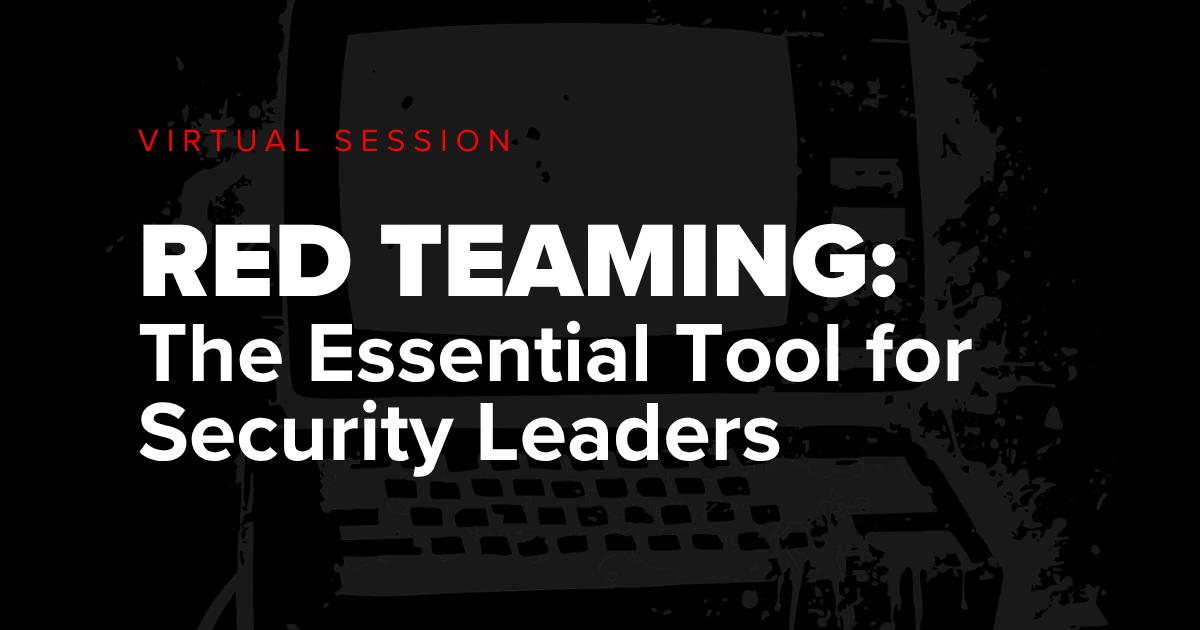How Does Social Engineering Work? From Planning to Execution
Join our webcast as we navigate the complex terrain of social engineering, offering insights into its various stages from planning to execution, common phishing techniques, and the necessity of ongoing vigilance and proactive strategies to combat this pervasive issue.
In our technologically advanced society, social engineering poses a significant and growing threat. On average, organizations experience 700 social engineering attacks each year. Our comprehensive webcast will guide you through the intricate labyrinth of social engineering, demystifying its multifaceted stages from the initial planning to the final execution. Understand that social engineering is not merely an industry jargon but a pervasive reality that impacts us all, frequently unbeknownst to us.
Join our session to hear Dardan Prebreza, Senior Security Consultant, explore:
- What social engineering is, including the most common phishing methods that are using to social engineer humans
- How planning, OSINT, and profiling is conducted
- Tools used for email-based phishing, smishing (SMS phishing) and vishing (voice phishing)
- Innovative techniques that our Red Team has been deploying in recent months
With social engineering and phishing techniques evolving at a rapid pace, it's challenging to stay abreast of the latest tactics used by threat actors. That’s why organizations should view social engineering not as a one-off activity, but as a continuous process requiring constant vigilance and proactive strategies. Join us to stay updated and strengthen your defenses against social engineering attacks.
Session Summary
In this eye-opening webcast, Bishop Fox Senior Security Consultant Dardan Prebreza provides a deep dive into the world of social engineering—a threat vector that impacts organizations with approximately 700 attacks annually. Moving beyond simplistic explanations of phishing, Prebreza methodically breaks down the sophisticated attack chain that modern social engineers follow, from initial planning through execution and exploitation.
The session begins by establishing a foundational understanding of social engineering as a psychological manipulation technique rather than a purely technical attack, exploring how attackers leverage human cognitive biases and emotional responses to circumvent security controls. Prebreza then examines the critical reconnaissance phase, demonstrating how attackers use open-source intelligence (OSINT) and profiling techniques to gather organizational information, identify targets, and craft highly convincing pretexts.
The presentation showcases real-world tools and techniques used in various attack vectors, including email-based phishing, smishing (SMS phishing), and vishing (voice phishing), with particular attention to innovative approaches recently deployed by Bishop Fox's Red Team. Throughout the session, Prebreza emphasizes that social engineering has evolved far beyond obvious scam emails to become a sophisticated, multi-channel threat requiring continuous vigilance. The webcast concludes with practical guidance on developing a comprehensive defense strategy that combines technical controls, security awareness, and procedural safeguards to strengthen the human element of security.
Key Takeaways
- Social engineering attacks follow a sophisticated methodology - Modern attacks involve extensive planning, reconnaissance, and psychological manipulation rather than simple mass-phishing attempts.
- OSINT provides attackers with powerful intelligence - Social engineers leverage publicly available information from company websites, social media, and professional networks to craft highly targeted and convincing scenarios.
- Multi-channel approaches increase effectiveness - Today's sophisticated attacks combine multiple communication channels (email, text, phone) to establish credibility and overcome skepticism.
- Psychological triggers remain consistent - Despite technological advances, social engineers continue to exploit fundamental human responses to authority, urgency, curiosity, and reciprocity.
- Technical tools have democratized attack capabilities - Modern frameworks and automation tools have lowered the technical barrier to sophisticated social engineering, making these attacks more accessible to a wider range of threat actors.
- Continuous adaptation is essential for defense - Organizations must view social engineering defense as an ongoing process rather than a one-time training initiative, constantly evolving to address emerging tactics.
Who Should Watch
This session is essential for:
- Security awareness program managers seeking to improve training effectiveness
- Risk management professionals responsible for assessing human-focused threats
- Security operations teams who need to recognize social engineering indicators
- Executives and managers who serve as high-value targets for attackers
- IT security professionals implementing technical controls against phishing
- Compliance officers concerned with human factors in security requirements
Anyone interested in understanding how attackers exploit human psychology to bypass security controls will benefit from this comprehensive exploration of modern social engineering tactics.


